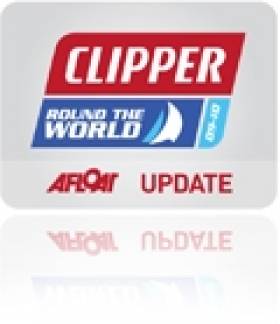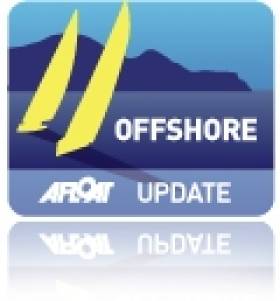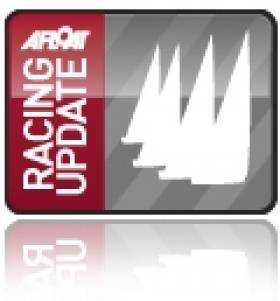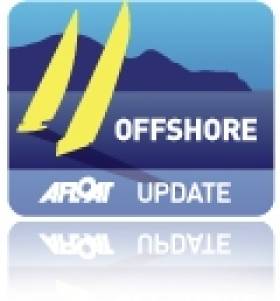Displaying items by tag: Offshore
Not your Average Summer Holiday
Colin Gregg, Dugy Ward and Gary Forber have just completed an amazing jet ski adventure covering some 4570 miles at sea from Orkney to Monaco aboard their Yamaha FX HO Cruiser Jet Skis. They called it the European Jet Ski Challenge.
Setting off on 1 May 2011 and arriving in Monaco 26 days later, the three adventurers raised over £21,000 (excluding Gift Aid) for two charities: Macmillan Cancer Support and Make A Wish Foundation.
In order to reach Monaco this summer, they needed the toughest and most reliable marine navigator around. So they chose the Garmin GPSMAP 451 a compact chartplotter featuring an ultra-bright 4" colour display. Colin says: "I chose the best navigator on the market to give me the greatest chance of completing the challenge. During the voyage it endured waves up to 8 metres and withstood 4570 miles in all weathers. It is however, still in perfect condition and ready for our next adventure!"
Previously, Colin and Dugy successfully circumnavigated the UK mainland in a record time of 11 days 8 hours and 45 minutes, raising nearly £25,500 for Macmillan Cancer Support and establishing a new world record.
For more information please visit http://www.europeanjetskichallenge.co.uk/
Clipper Teams Enjoy Respite from Strong Winds
This question and the decisions taken are behind today's shake up at the top of the Race 1 leader board as Gold Coast Australia, which was at the head of the fleet 24 hours ago, plumps for the first option, while Visit Finland is sticking to the rhumb line in their quest to be the first to fly a yellow winner's pennant in Clipper 11-12.
"Who would have thought that yesterday morning we were smashing into 25 knots of wind with rain and not a glimpse of sun and this morning we are sailing downwind with 20 knots behind us in glorious sunshine... it's almost as good as being on the Gold Coast of Australia!" says skipper, Richard Hewson.
"Yesterday the tactical decision was made to gybe east towards land in a direction away from Madeira and head towards the Portuguese coast towards a developing wind belt between two pressure systems. The benefit of this is also to pick up stronger currents flowing south down the Portuguese coast.
"During the evening the decision was made to change from the heavy weight spinnaker to the medium weight. Alas, during the change some extensive chafing was noticed on the spinnaker halyards. After hoisting the medium spinnaker on the starboard halyard, the crew worked hard to re-splice cover onto the port halyard to prevent further chafing.
"At 0400 the wind backed to the north northwest and co-incidentally it was change of watch time and a perfect time to gybe back onto starboard and resume our course for Madeira.
"At the moment we are just off Lisbon on the west coast of Portugal and making good speed towards our destination. We will not know if our decision to cover the extra miles and head inshore has paid off until this morning's, or even this evening's sched (a sched is communication between the race fleet and the race office to notify them of our position). My guess is that at the moment the rest of the fleet are a lot further west to and closer Madeira as the crow flies. We will have to wait and see if our 'flyer' has paid off."
Have a look at the wind forecast on the race viewer on www.clipperroundtheworld.com, clicking through the next 12, 24 and 36 hours to see whether you think Gold Coast Australia's tactic is the correct one. The arrows show the direction and strength of the forecast wind.
Visit Finland is back in the lead and the team's navigator, Tomi Lintonen, also remarks on the difference in the conditions they now have. "What a contrast to the previous couple of nights!" he says. "Now we know that racing can sometimes feel luxurious. For a while it seemed that we would not be able to see the half-moon or the stars due to a band of clouds closing in from the west but after midnight we were treated to a friendly sight of hundreds (sorry, just hundreds, not millions) of stars. We were fortunate to have enough breeze to keep the lightweight spinnaker up all through the night - and it aided our fine ship in eating up the miles separating us from the pleasures of Madeira."
New York is maintaining pressure on Visit Finland and Gold Coast Australia and they, too, are enjoying the respite from the battering of the last two days.
Gareth Glover, skipper of the US entry, says, "The sea is still rolling a bit in the swells that the storm churned up and with the kite up, the helm and the trimmers were doing their best to squeeze out some low single digit knots. Talk turned to where the boats that sped down the coast were. They seem to have gained some distance but perhaps not that much towards the finish.
"The breeze was slightly better by evening and the crew settled down for a starry night of helming and trimming. Scorpio was just setting as the 10pm watch came on and Sirius appearing in the east was bright enough to throw a reflecting stream on the gentle seas... The dreads of last night seem so far away."
The podium places in this race are all there for the taking and Derry-Londonderry, Singapore and Welcome to Yorkshire are all in with a chance of claiming one - and they're all working hard to get there.
Mark Light, skipper of Derry-Londonderry, reports a night full of headsail changes. "We have gone from a beautiful sail with our medium weight spinnaker to poled-out Yankee 2, to windseeker and now to Yankee 1 as the breeze is now building from the west northwest.
"My crew are very proficient at most evolutions and are showing great confidence even at this early stage. I do give my watch leaders and assistants lots of responsibility and they have responded with lots of intelligent and pro-active answers. I'm no Einstein but my theory is: Crew Responsibility + Coaching + Confidence = (Fast Boat + Happy Boat) x Extra Sleep! I was never good at maths but I'm liking simultaneous equations more and more!"
While Mark has discovered a new skill for maths, on Welcome to Yorkshire it's gymnastics, according to skipper, Rupert Dean.
"Our lives have been transformed from being thrown around at 20 degrees to trying to coax life into lifeless sails on a flat deck - very difficult when the residual wind is overcome by confused, sloppy seas from the day before," he tells the race office this morning.
"Moving around the boat in these conditions is every bit as much of a challenge as in rough weather. For with lack of wind to induce a constant angle of heel, the boat moves unpredictably in the sloppy seas, making us all stumble around like drunken men. Some can cope with this better than others. Keith Pickering, for example, has found a unique way of getting across the boat quickly, which involves unannounced backflips. His latent gift for gymnastics was spotted when doing a back-flip across the deck, which impressed us all. No harm done, fortunately, but it does demonstrate the point that working on boats has its hazards. Needless to say, all on Welcome to Yorkshire send their condolences to Russell Sandbach on Geraldton Western Australia. It could have happened to anyone."
"It's been a calmer night in many ways for the crew on Geraldton Western Australia," says Juan Coetzer, skipper of the Western Australian yacht. "After our pit stop in Vigo we have enjoyed lighter winds on our journey south west to re-join the fleet. Below decks things are back to normal with everyone catching up on a bit of rest and adapting to our new watches following Russell's, hopefully brief, departure. He's planning to re-join us with Madeira cake and beer!"
He'll be heartened by all the messages of support on the Clipper Race Facebook page!
Reports from across the fleet this morning have an air of relief about them - none more so than from Singapore, whose skipper, Ben Bowley says, "We have seen a marked improvement in the weather and therefore the general mood aboard Singapore. The sun has been out, people are dry, the boat is stable and things can finally get clean and tidy. I feel that part of the joy of yachting is pulling through the really rough times when one really is at one's wits end and emerging the other side with a greater appreciation of life's simple pleasures. Such things as dry, clean clothes we tend to take for granted in everyday life whereas on a yacht they can be the greatest of luxuries. Having these deprivations at sea tends to change one's attitude to life when back ashore.
"In terms of our sailing performance over the last 24 hours, we started off very well, managing to hoist our heavy kite early in the day yesterday. The conditions were not ideal as there was a failing wind combined with a confused heavy sea, throwing the boat violently from side to side as if she were a child's toy in the bath, hence the choice of the heavy, more robust spinnaker. We were able to hold the kite well through the day until around mid-afternoon the halyard parted approximately ten metres from the top. The kite was recovered with no further damage and the Yankee 2 swiftly raised and poled out to allow us to still make good progress downwind.
"This is how we have been running for the last 12 hours, slowly, almost dead down wind, whilst we endeavour to put more chafe protection on the forward inboard end of the spreaders. Chafe is going to become the bane of our lives on these yachts with a lot of areas yet to be discovered the hard way and protected against. The wind has just backed round and come forward of the beam so currently Rotary watch are rigging for a change to the Yankee 1. Hopefully a day of close reaching toward Madeira in light, flat conditions will give the guys a chance to have a taste of how life aboard is to work for extended periods. Thermals and underwear are to be washed today, as are bodies, as we have finally dug out the solar showers purchased pre-departure. Hopefully we can finish the chafe protection on the spreaders before the wind comes aft again requiring the kite."
Chafing - where a rope rubs constantly against a piece of the metal rigging and wears through if you don't pick it up quickly enough - is also on the minds of the team on board Edinburgh Inspiring Capital.
Skipper, Gordon Reid, writes this morning, "The old saying that 'chafe is the enemy' was proven to be correct following our previous night flying towards Madeira. The crew are proving to be quite skilled at recognising as well as resolving any potential problems before they become problems and spent a large part of the day whipping lines and applying chafe protection to every surface of the boat that might give us a problem.
"They are all now in the solutions business... 'No problems, only solutions'. Sometimes solutions arrive without problems, it's great to watch! The standard and quality of the workmanship was very impressive and they whipped and spliced their way around the entire race yacht.
"Whilst all of this activity was underway we continued to tease every knot out of the yacht under spinnaker in sometimes light and fickle winds. Our patience paid out as the wind backed and filled once again we were rocking along under conventional headsails. The crew have found their inner tigers and want to roar!"
While, at the back of the fleet, Qingdao's dragon may not be roaring, the fire in her belly is not extinguished either. There are still more than 38,000 miles and 14 more races in Clipper 11-12 and, as is often said, it is a marathon not a sprint. Skills learned in difficult times will stand the team in good stead for the rest of their campaign.
Ian Conchie, skipper of Qingdao, says, "It's been a quiet-ish night; no reefing, no rain, no shipping. For once the only excitement we had was a broken strop on a spinnaker sheet! And a toast related fire alarm - all causing me interrupted sleep but no major drama. It's been a good 24 hours as we have kept the boat moving in pretty much the same direction, just praying for more wind to speed us on our way! If the forecast is right the wind should start to veer today and build to speed us down for the final push to Madeira!"
The first yachts are expected to arrive at Quinta do Lorde Marina on Tuesday 9 August.
Positions at 0900 UTC, Sunday 7 August
Boat DTF*
1 Visit Finland 459nm
2 New York 474nm (+15nm DTL*)
3 Gold Coast Australia 477nm (+18nm)
4 Derry-Londonderry 485nm (+26nm)
5 Welcome to Yorkshire 493nm (+34nm)
6 Singapore 497nm (+38nm)
7 De Lage Landen 520nm (+61nm)
8 Geraldton Western Australia 558nm (+99nm)
9 Edinburgh Inspiring Capital 567nm (+107nm)
10 Qingdao 607nm (+148nm)
*DTF = Distance to Finish, DTL = Distance to Leader
Full positions are updated every three hours and can be found at www.clipperroundtheworld.com.
October's Middle Sea Race Looks for Entries
With 31 yachts entered, the event is well on the way to matching last year’s fleet of 76 and the record fleet of 78 set in 2008. The first boat to register its interest was the German Rogers 46 Varuna, owned by Jens Kellinghusen. Varuna finished 13th overall in IRC and won her ORC class in 2010, and is an enthusiastic returnee. Varuna’s interests extend beyond just this race, since she is actively participating in the 2011 Atlantic Ocean Racing Series (AORS) has having just completed the Transatlantic Race, and being about to embark on the Rolex Fastnet Race. With the prospect of a considerable number of season’s sea miles under her belt before October it would be fair to suppose that her crew will be supremely well-drilled come the start of the Rolex Middle Sea Race.
Next up were Jason and Judy Payne-James with their Dufour 45, Heartbeat IV (GBR), closely followed by the current headline act: Niklas Zennstrom’s 72-foot Judel/Vrolijk designed Rán 2, the 2009 winner of the Rolex Fastnet. This will be the third visit of the Rán crew, the second on the world champion mini-maxi. Their best result to date was fourth overall in 2009, something they will be looking to improve upon.
The spread of international entries currently includes boats from most seafaring nations in Europe, plus Russia and South Africa. Chris Frost’s 54-foot Prodigy (RSA) is another yacht competing on the AORS. She finished the Transatlantic Race half an hour behind Varuna, and will be looking to turn that table in the Rolex Fastnet ahead of the deciding match in Malta in October.
This year, foreign crews will be offered a substantial upgrade on the already excellent facilities available at this race. The RMYC is in the process of installing some 60 pontoon berths on Marsamxett Harbour, right off the clubhouse at Ta’Xbiex. This will be the first time in the 43 year history of the event that the RMYC has been able to accommodate the main bulk of the competing fleet so close to the centre of operations.
“It is a great achievement for the club, and great news for the event and for the competitors,” says Commodore Georges Bonello DuPuis. “It was a substantial investment, but is part of our vision for the general expansion of the yacht club’s activities, plus we have long wanted to moor participating yachts adjacent to our facility so we can host them in the best possible way. We have a well-earned reputation for really looking after the visiting international crews, but this year will raise the bar still further.”
And, whilst the local Maltese participants might not benefit directly from the improved moorings, they will certainly enjoy the increased party atmosphere anticipated at the club ahead and after the race. Jonas Diamantino’s ILC 40 Comanche Raider II Gasan Mamo was one of the first hometown boats to enter, with Aaron and Edward Gatt Floridia’s J/122 Otra Vez and Jonathan Gambin’s Dufour 44 Ton Ton Surfside hot on his heels. More are sure to follow.
The Rolex Middle Sea Race commences on Saturday, 22 October 2011.
Entries close on 14 October.
The final prize giving is on Saturday, 29 October 2011.
George David's Rambler established the current Course Record of 47 hours 55 minutes and 3 seconds in 2007.
Irish Yachts Line Out for the Fastnet Race
ARABELLA, J111, Niall Dowling
Niall Dowling and Nick Smyth will be co-skippering the J111 'Arabella' under the burgee of the Royal Irish Yacht Club. 'Arabella', the first J111 in Europe, has had an extensive offshore campaign since winning the Hamble Spring Series in April. The Fastnet Race is the focus of their 2011 campaign.
Arabella currently lies 2nd out of over 300 boats in the RORC Overall Championship Series behind Piet Vroon's Kerr 46 Tonnerre de Breskens. Crew for the Rolex Fastnet will include Class 40 sailor, John Cunningham, GBR Olympic Finn coach Matt Howard and Volvo sailor Craig Bowie. Also on board is Dowling's long term friend, skipper and double handed campaigner Michael Boyd. Boyd is a veteran of many Fastnet campaigns, the first of which was on the Irish Admirals Cup team in 1983, will further bolster the offshore experience. The dynamic duo of Peter Knight and Aaron Cooper both amongst the elite graduates of the Solent Keelboat Academy will cover roles of bowman and navigator respectively.
When asked about the campaign Dowling commented: "This campaign is all about getting a group of friends that used to sail a lot together, back out there. Nick and I used to race dinghies, instructed sailing together in Dun Laoghaire and campaigned offshore. Nick has been doing lot of competitive team racing but until this campaign, the last offshore race we did together with Michael was the Round Ireland Race in 2006."
"The RORC Eddystone Race in May definitely showed there were no cobwebs as Nick drove most of the way back from the lighthouse topping out at 22.6 knots and averaging mid teens! John, although normally based in the US, has been doing a fellowship at Cambridge University and has been on board since the boat arrived".
Irish Olympic Finn sailor Tim Goodbody and the National Yacht Club's now Brighton based boat designer Jonny Coate are also regulars on board. For the Rolex Fastnet there will be a competitive fleet of 77 boats in IRC2 where Arabella currently lies 2nd in the series behind RORC commodore Andrew Mc Irvine's First 40 La Reponse.
DINAH, JOD35, Barry Hurley
Owner and skipper Barry Hurley will also be flying the flag for the Royal Irish Yacht Club onboard Dinah, a JOD35.
Barry will be sailing with Andy Boyle and between them they have clocked up an impressive amount of racing, including three transatlantic, three Round Ireland Races, two full RORC series campaigns and many more fully crewed regattas,including Cork Week, Sovereigns Cup, etc.
Barry won his class and was fourth overall on Dinah in the 2009 OSTAR (solo transatlantic). The Fastnet Race is one of the few major middle distance
offshore races in the world that neither Barry nor Andy have completed and 2011 is the year to tick that box.
SPIRIT OF JACANA, J133, Bruce, James and Alan Douglas, Carrickfergus, Co. Antrim
This boat is owned by the three Douglas brothers. The brothers and most of the crew are ex Scorpion dinghy sailors from Northern Ireland. The brothers previously owned a J35 Jacana and in this were class winners at Cork Week and at the Scottish series.
This really is a family affair as two of the brothers sons are also competing, Keith and Cameron Douglas. Cameron has a busy summer as he is representing RYA Team GBR at the ISAF Youth Worlds in the Laser Radial class in July and also at the Team Race Worlds in Ireland in September.
This is the first Fastnet Race for the crew who have sailed in a number of offshore races in Ireland and Scotland. "Having competed at various racing events such as Cork Week and Scottish Series, we wanted to take on other challenges. [Our goal for the Fastnet will be] to finish the race and enjoy the experience!"
Lula Belle Wins ISORA Night Race
WIORA Race Week Shaping up at Clifden Venue
With a week to go to the first gun of the West Coast Championships in Clifden Co. Galway, the 35th Anniversary event of the West of Ireland Offshore Racing Association (WIORA), is shaping up to be one to remember at Clifden Boat Club in County Galway.
At this year's West Coast Championships the race courses are being set by International Race Officer Alan Crosbie, taking full charge of the thirty boat plus fleet. There will be four days and seven races of various courses including a coastal race to decide the class winners and overall West Coast Champion.
Over the last thirty five years the association has gone from strength to strength which provides and promotes a programme of Inshore, Offshore and Coastal racing for cruisers, the association works very closely with the various clubs along the western seaboard.
Slightly down in numbers from previous West Coast Championships, but certainly not lacking in the quality of sailors and boats taking part.
Last year's Class One winner Glen Cahill's J109 'Joie De Vie' from Galway Bay Sailing Club is travelling to defend his title from such boats as fellow club sailor Liam Burke's Harley C33 'AWOL', Rob Allen's Corby 36 'Mustang Sally' and Dan Counihan's Beneteau 36.7 'Galileo' from Tralee Bay Sailing Club.
In Class Two Ray McGibney's Dehler 34 Optima 101 'Disaray' from Foynes Yacht Club, last year's class winner, West Coast Champion 2010 and who finished second overall at this year's recent ICRA National Cruiser Championships in Royal Cork Yacht Club will be up against strong competition from previous winner Cormac Mc Donncha's Beneteau 31.7 'Quelle Surprise' travelling from Galway Bay Sailing Club, Stephen Mullaney's Beneteau 375 'Walter Mitty' travelling all the way from Howth Yacht Club and Brian Raftery's Corby 26 '2602' from Sligo Yacht Club.
Class Three promises top class competition with host club sailor Jackie Ward's Parker 27 'Hallmark' will be up against fellow club sailor Paul Ryan's Toledo 30 'Saber', John Paul Buckley's Golden Shamrock 'Battle' from Foynes Yacht Club, Stephen Fitzgerald's First 30E 'Orient' from Mayo Sailing Club and Gary Fort's J24 'Jaguar' from Tralee Bay Sailing Club.
Prizes will be presented to the winning teams over the four days of the event for individual classes each day in both handicap systems IRC & ECHO.
On the final day of racing, Saturday, there will be prizes for the overalls in each class in both Handicap systems IRC and ECHO. For the production boat's, there is an added incentive with X-Yachts, Sigma and Beneteau putting up cup's for the best performing boat's overall in these categories.
And last, but definitely not least, the overall winners of the event. There will be a third and second overall out of all of the classes and finally the 2011 'The West Coast Champion' will be crowned.
Some 16,000 sailors faced wind speeds of up to 28 knots and there were huge swells to contend with off the Needles and at St. Catherine's as the record-breaking fleet of 1,900 yachts undertook this most famous 50 nautical mile westabout Island circumnavigation on Saturday. A number of incidents were reported to the Coastguard, including 'Man Overboard' reports and capsizes as well as dismastings. There was a lot of sail damage across the fleet that ranged from high tech racers through to many smaller boats competing. However, a spokesman for the Race Management team at the Island Sailing Club, stressed that some of these incident reports were not attributable to the Race and were involving spectator boats rather than competitors.
Dave Atkinson, Assistant Principal Race Officer of the day said, "It was a successful race for the Island Sailing Club and we have received many compliments on running a great but challenging event. We're looking forward to welcoming competitors in 2012 for another record-breaking year."
Thousands of weary but generally happy sailors returned to Cowes and the marinas along the South Coast of England from mid afternoon yesterday, all feeling justifiably proud of their immense achievement in getting round the Island safely in tough conditions for even the most experienced and hardened sailor.
Nick Rogers, who usually sails a 470 with partner Chris Grube, helmed the Contessa 26 Sundowner to victory at the J.P. Morgan Asset Management Round the Island Race.
Line Honours went to French skipper Lionel Lemonchois and his 50ft multihull Prince de Bretagne who were first to cross the finish line in 3hrs 49m and 58s.
The final number of boats to cross the finish line in Cowes was 1,302 and there were 438 retirements and 16 DSQ (disqualified) and/or OCS (on course side).
The Race has become progressively more high profile as enhanced technology and communications has helped spread the scale and excitement of the Race farther and more widely around the globe. On Race Day, the total number of page impressions on the Race website amounted to 393,000 which is 100,000 up on 2010's site visitors. The Race Viewer, allowing online spectators to track boats of their choice, was downloaded by over 32,000 people. The interactive Race Progress Blog produced by the Media Centre and Race Control attracted 17,762 visitors over the course of twelve hours with appreciative comments coming in from as far away as Australia, the Philippines, Mexico and the US.
The Island Sailing Club look forward to welcoming everyone to next year's Race taking place on Saturday 30th June.
Big Turnout Urged for Turbine Race
Offshore boss Peter Ryan is urging as many boats as possible to get invovled in the next ISORA race on May 28th from Pwllheli to Wicklow but also to make it a great offshore weekend by participating too in the Turbine Race from Arklow on the Sunday. It is the last ISORA race before the Dun Laoghaire to Dingle Race on June 11.
It is hoped that boats will remain in Wicklow after the ISORA race for the evening and head down to Arklow (14 miles) the following morning for the start of the Turbine Race.
Raging Bull Top Again in First ISORA Race
A 'tough opener' is how Commodore Peter Ryan has described the first ISORA offshore sailing race of the season from Holyhead to Dun Laoghaire yesterday. Inspite of the difficult conditions though there was little change at the top of the leader board. Skerries domination of Irish Sea racing continues with the Sigma 400 Raging Bull maintaining his winning form. It was a very hard race with usual flukey conditions trying to leave Dublin Bay at 8am on Saturday morning (Afloat.ie followed the fleet out of the bay on twitter). Strong winds followed for the beat to the M2 buoy before another long leg and a short beat to Holyhead. The sea conditions on the 60-mile course were trying for many crew who were out for the first time this season.
ISORA has formed three classes this season, the aim is to give better competitive sailing between similar boats. First race results below.
| Boat Name | Sail No. | Type | IRC Rating | Finish Time | Time elapsed | Corrected | Place | Place |
| (provisional) | Time | Class | O/A | |||||
| English Mick | GBR4771R | Beneteau 47.7 | 1.130 | 19:18:26 | 40706 | 45997 | 2 | 8 |
| GFT Adventurer | GBR23161 | Beneteau 45 | 1.101 | 19:54:46 | 42886 | 47217 | 3 | 9 |
| Quite Correct | IRL 5405 | DS54 | 1.095 | RET | - | - | - | - |
| African Challenge | IRL 2649 | Fast 42 | 1.077 | RET | - | - | - | - |
| Tsunami | IRL 4007 | First 40.7 | 1.061 | 18:48:01 | 38881 | 41252 | 1 | 4 |
| Lancastrian | GBR 7682T | Starlight 14.5m | 1.059 | 20:27:00 | 44820 | 47464 | 4 | 10 |
| Rebellion | IRL 6001 | Nicholson 58 | 1.054 | RET | - | - | - | - |
| Orna | IRL 532 | 1.047 | DNS | - | - | - | - | |
| Madam Wen | GBR1417L | Sweden 42 | 1.04 | RET | - | - | - | - |
| Aztec 3 | IRL29832 | A35 | 1.034 | 18:59:30 | 39570 | 40915 | 3 | 3 |
| Raging Bull | IRL 9666 | Sigma 400 | 1.027 | 18:42:30 | 38550 | 39590 | 1 | 1 |
| Jedi | IRL 8088 | J109 | 1.029 | RET | - | - | - | - |
| Sgrech | GBR9319R | J109 | 1.026 | 19:01:52 | 39712 | 40744 | 2 | 2 |
| Miss Scarlett | IRL 4763 | Sunfast 40.3 | 1.025 | RET | - | - | - | - |
| Lula Belle | IRL 3607 | First 36.7 | 1.019 | 19:35:55 | 41755 | 42548 | 5 | 6 |
| First of September | IRL 8581 | First 43.5 | 1.017 | DNS | - | - | - | - |
| Dinah | IRL 3508 | JOD 35 | 1.016 | 19:36:22 | 41782 | 42450 | 4 | 5 |
| Adelie | FRA 9631 | First 34.7 | 0.988 | 21:26:00 | 48360 | 47779 | 2 | 11 |
| Mojito | GBR 4184 | Bravaria 39 | 0.988 | 20:36:22 | 45382 | 44837 | 1 | 7 |
| Mistral of St Helier | K 8337 | Sigma 38 | 0.984 | RET | - | - | - | - |
| Yahtzee | IRL 1068 | Oceanis 411 | 0.983 | 02:23:00 | 66180 | 65054 | 3 | 12 |
| Obsession | IRL 4513 | Sigma 33 | 0.905 | RET | - | - | - | - |
| Sarnia | IRL 2260 | 0.891 | RET | - | - | - | - |
National Yacht Club Hosts Offshore Sailing Talk
Sailing offshore? The National Yacht Club is staging an 'Introduction to Offshore Racing' evening next Saturday 7th April 2011 at 19.30 and a line up of speakers inlcudes Maurice 'Prof' O’Connell on winning the 2009 Dun Laoghaire to Dingle Race. Mick Liddy on how to prepare for offshore sailing. Former National Yacht Club commodore Peter Ryan will give tips on ISORA racing in the Irish Sea.
Whether you are a Round Ireland expert or an offshore newbie the Dun Laoghaire club stresses it is an informal night but a 'unique one' both for offshore sailing fans and those who might be considering going offshore for the first time this season.
All the latest ISORA News
All the latest ICRA News
All the latest La Solitaire du Figaro News
All the latest Round Ireland News



























